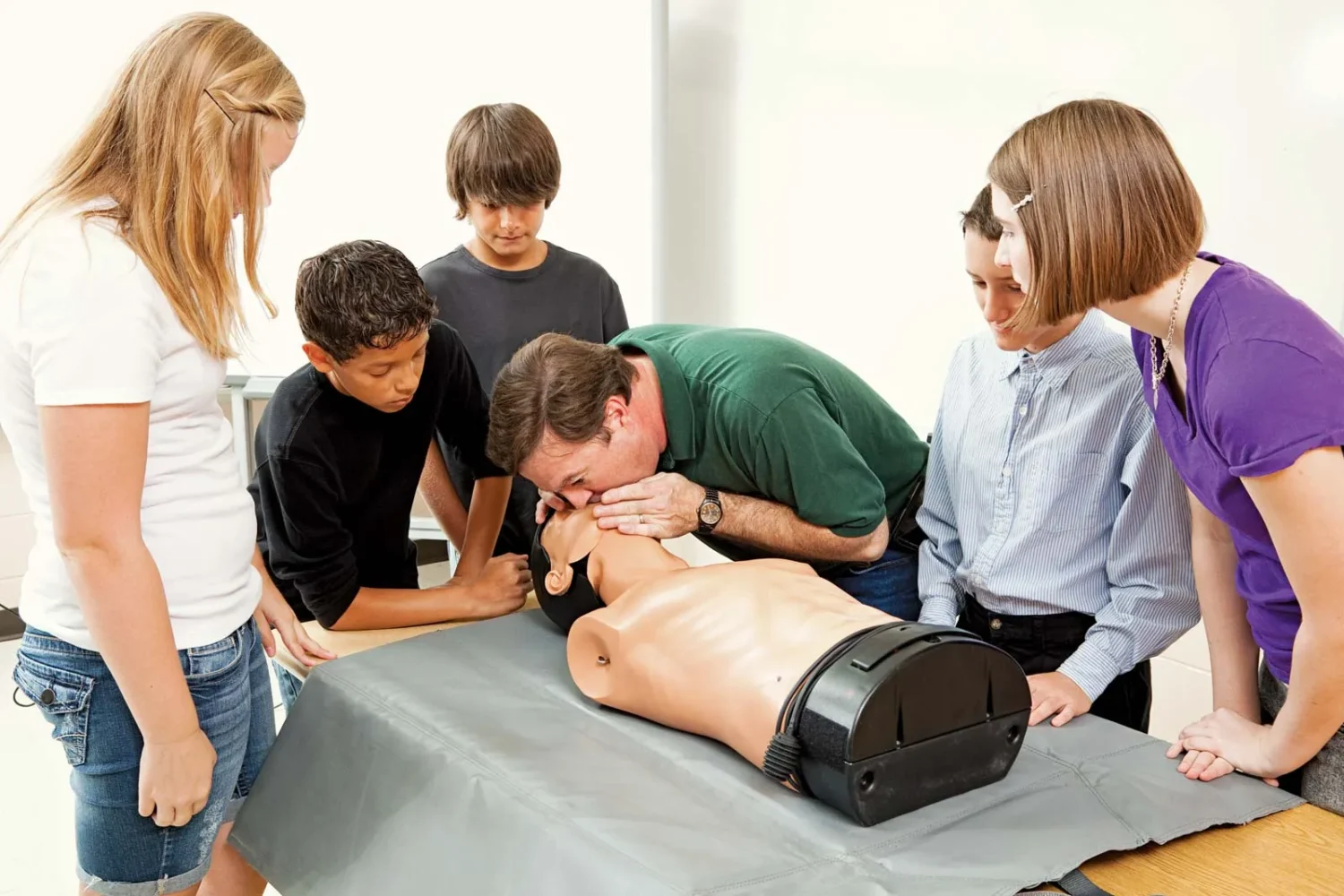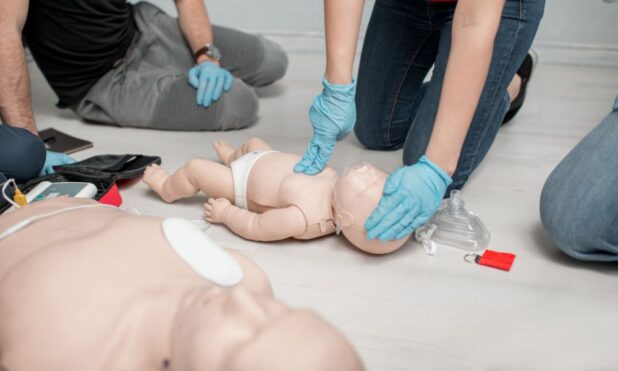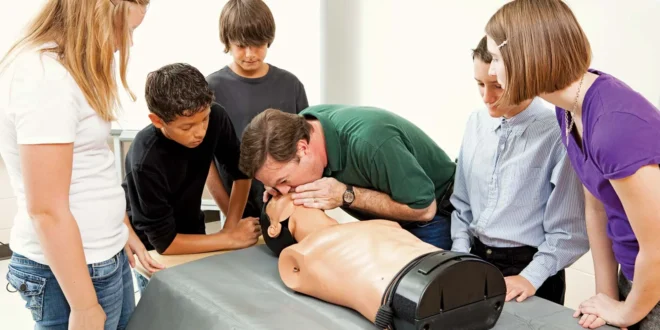Cardiopulmonary Resuscitation (CPR) is a life-saving technique designed to mimic the function of the heart and lungs when they cease to work properly, crucial in emergency scenarios like cardiac arrests.
This technique is vital as it can keep oxygen flowing throughout the body, sustaining life until professional medical help arrives.
Table of Contents
The Basics of CPR
CPR stands for Cardiopulmonary Resuscitation, outlining its fundamental objectives: ‘Cardio’ pertains to the heart, ‘Pulmonary’ to the lungs, and ‘Resuscitation’ signifies the act of reviving.
The paramount goal of Cardiopulmonary Resuscitation is to maintain a flow of oxygenated blood to the brain and other vital organs until further measures are taken to restore spontaneous heart activity.
The Chain of Survival
The Chain of Survival is a critical concept in emergency medical response, consisting of four vital links: early recognition and call for emergency help, early CPR, rapid defibrillation, and effective advanced life support.
Cardiopulmonary Resuscitation serves as an integral component, maintaining a semblance of physiological equilibrium by manually preserving intact brain function.
CPR Techniques
CPR primarily comprises two main components: chest compressions and rescue breaths. High-quality chest compressions are pivotal to maintain blood circulation. They are performed by pushing hard and fast in the center of the chest, allowing complete chest recoil after each compression.
Rescue breaths, alternatively, are essential to ensure oxygen supply to the lungs. To learn more about popper techniques you should visit https://cprcertificationnow.com.

Hands-Only CPR
Hands-Only CPR is a modern, simplified form of CPR that involves only chest compressions. It is highly advantageous due to its simplicity and efficacy, especially for untrained individuals or those uncomfortable performing mouth-to-mouth resuscitation.
Hands-Only Cardiopulmonary Resuscitation is typically utilized in the initial stages of adult cardiac arrest, and it is vital to perform compressions at a rate of 100 to 120 per minute until professional help arrives.
AED (Automated External Defibrillator) Use
Automated External Defibrillators (AEDs) are indispensable in conjunction with Cardiopulmonary Resuscitation, as they can restore a regular heartbeat by sending an electric shock to the heart.
These devices are user-friendly, providing step-by-step instructions, allowing even untrained individuals to use them effectively in emergency situations.
Recognizing Cardiac Arrest
Recognizing cardiac arrest promptly is crucial as it facilitates immediate intervention, essential for survival. The signs include sudden loss of responsiveness, absence of normal breathing, and lack of pulse. If someone exhibits these symptoms, one must act swiftly by calling 911 and commencing CPR.
CPR for Infants and Children
Pediatric Cardiopulmonary Resuscitation diverges significantly from adult CPR, necessitating distinct techniques and considerations.
For infants, one uses two fingers for compressions, and for children, one or both hands, depending on the child’s size. The compression depth and rate differ too. It is crucial to administer rescue breaths more gently, considering the smaller lung capacity.

CPR Certification
Achieving Cardiopulmonary Resuscitation certification is invaluable, enabling individuals to act promptly and efficiently in emergencies. Various organizations offer classes and courses, including the American Red Cross and the American Heart Association, which cover essential skills and knowledge.
Good Samaritan Laws
Good Samaritan laws are provisions designed to protect individuals who assist those in danger, exempting them from liability if they act in good faith. These laws are crucial as they encourage bystanders to provide assistance without the fear of legal repercussions.
CPR in Special Situations
Special situations like drowning or choking require specific modifications to standard CPR techniques. For drowning victims, rescue breaths are critical due to the likelihood of hypoxia.
For choking individuals, the Heimlich maneuver is essential before commencing Cardiopulmonary Resuscitation.
 World Magazine 2024
World Magazine 2024






